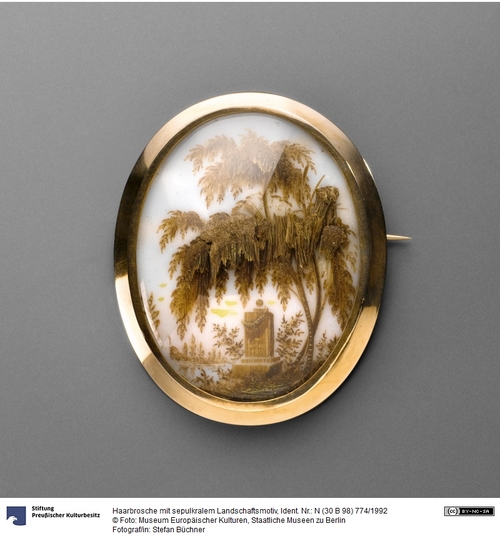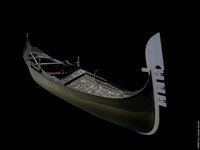Die große, ovale Brosche hat eine goldfarbene Fassung. Auf einer unter Glas gelegten vorgezeichneten Platte ist mit Haarstaub und kleinen Haarsträhnen eine Landschaft mit Bäumen, Trauerweide und Grabmal dargestellt (Haarklebearbeit). Auf der Rückseite befindet sich eine große Verschlußnadel.
Im Zuge der Aufklärung entwickelte sich nach 1800 ein Bewusstsein für das Individuum. Zahlreiche Schmuckstücke, deren Besonderheit das Material Haar ist, zeigen als Zeichen der privaten Erinnerungskultur sepukrale Motive wie Trauerweiden, Grabmäler und Freundschaftsaltäre.
Erwerbungsort: Freiburg, Baden-Württemberg
en

